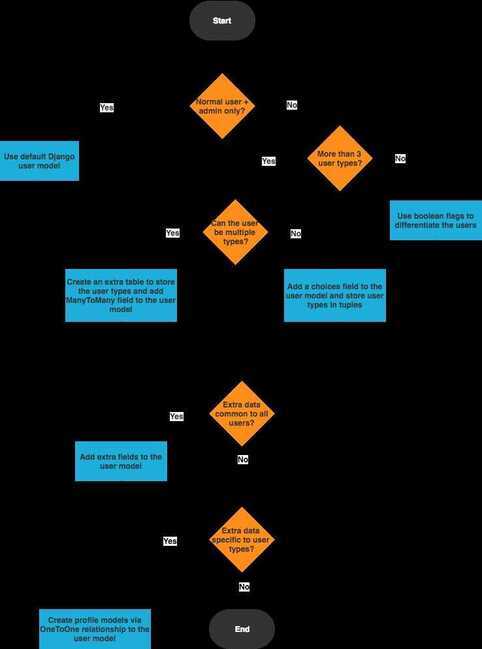Advanced
- Atomic Transactions
- Using
+as the related_name when we do not want django to automatically create related_name - Using decorators
Tips
- No matter what strategy you pick, or what is your business model, always use one, and only one Django model to handle the authentication.
- Never user the built-in Django User model directly, even if the built-in Django User implementation fulfill all the requirements of your application.

Signals - https://anonbadger.wordpress.com/2018/12/15/python-signal-handlers-and-exceptions
Introduction to Django Signals | Django (3.0) Crash Course Tutorials (pt 18)
Context Processors
A context processor has a very simple interface: It's just a Python function that takes one argument, anHttpRequestobject, and returns a dictionary that gets added to the template context.
https://djangobook.com/writing-context-processors
https://docs.djangoproject.com/en/2.2/ref/templates/api/#using-requestcontext
Middlewares
http://www.gustavwengel.dk/django-middleware-walkthrough
Problems / Optimizations
N+1 Select Query Issue
This problem occurs when the code needs to load the children of a parent-child relationship (the "many" in the "one-to-many"). Most ORMs have lazy-loading enabled by default, so queries are issued for the parent record, and then one query for EACH child record. As you can expect, doing N+1 queries instead of a single query will flood your database with queries, which is something we can and should avoid.
Example
Let's say you have a collection ofCarobjects (database rows), and eachCarhas a collection ofWheelobjects (also rows). In other words, Car->Wheelis a 1-to-many relationship.
Now, let's say you need to iterate through all the cars, and for each one, print out a list of the wheels. The naive O/R implementation would do the following:
SELECT * FROM Cars;
And then for each Car:
SELECT * FROM Wheel WHERE CarId = ?
In other words, you have one select for the Cars, and then N additional selects, where N is the total number of cars.
Alternatively, one could get all wheels and perform the lookups in memory:
SELECT * FROM Wheel
This reduces the number of round-trips to the database from N+1 to 2. Most ORM tools give you several ways to prevent N+1 selects.
https://theorangeone.net/posts/django-orm-performance
Links
Django’s select_for_update with Examples and Tests | by Alexandre Laplante | Medium